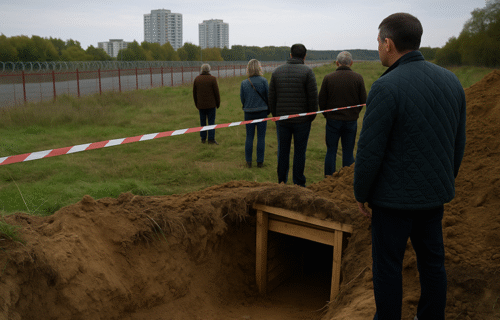Belarus remains one of the few European countries to uphold full military conscription, requiring men aged 18 to 27 to serve between 12 and 18 months, depending on education level. While Lithuania limits service to nine months and Russia recently raised its draft age to 30, Minsk continues to tighten exemptions and expand eligibility — a reflection of its deepening alignment with Moscow’s defence priorities. In contrast, neighbouring Poland and other NATO states rely on professional or volunteer forces, underscoring the stark divide between the region’s opposing security philosophies.
This divide has become increasingly visible in 2025 as Poland’s relationship with its eastern neighbour is tested by both humanitarian and security challenges. On one hand, the country has opened its economy to a growing Belarusian diaspora fleeing repression and economic stagnation. The number of Belarusians living legally in Poland has surged sixfold in five years — from around 25,000 in 2020 to nearly 150,000 by mid-2025. Many have found new beginnings in sectors such as technology, logistics, and manufacturing, with Warsaw, Kraków, and Białystok emerging as hubs of Belarusian life. Including those without residence permits, the total population of Belarusian origin in Poland may exceed 150,000.
Yet even as people move westward seeking stability, tensions on the border have intensified. In late 2025, Polish authorities discovered two underground tunnels crossing from Belarus — one near Narewka, partly collapsed and about 40 metres long, and another near Kondratki, more sophisticated and extending up to 70 metres with timber supports, ventilation shafts, and a small trolley system. Officials suspect the tunnels were used for smuggling or clandestine crossings rather than heavy transport.
The discoveries have reignited concerns over security along one of the EU’s most sensitive frontiers. Warsaw accuses Minsk of weaponising migration to pressure the bloc, pointing to the timing of the tunnels’ discovery shortly after joint Belarusian-Russian military exercises. While no direct link to the Belarusian state has been confirmed, the sophistication of the tunnels suggests coordination beyond ordinary criminal activity. Poland has since strengthened surveillance, deploying radar and seismic detection systems across its eastern perimeter.
Together, these developments paint a portrait of a region caught between two opposing forces — repression and escape, militarisation and migration. Belarus’s rigid conscription system and growing dependence on Moscow reflect a state tightening its grip, while Poland faces the difficult task of guarding its borders without closing its doors to those fleeing that same control. The sealed tunnels may no longer pose a physical threat, but they remain a potent metaphor for the unseen currents of fear, movement, and ambition shaping Eastern Europe’s uncertain future.
